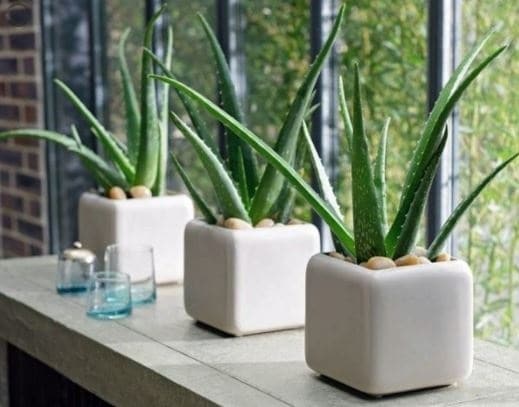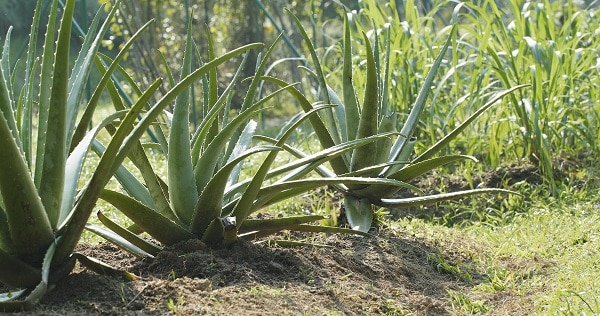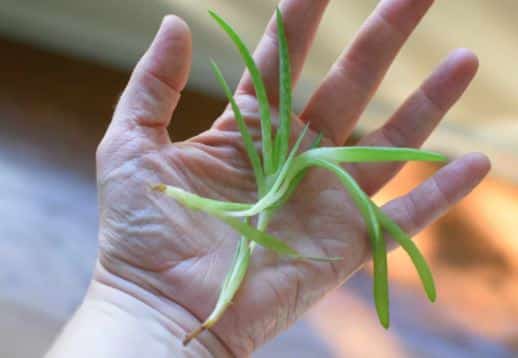Aloe vera plants are mainly in tropical regions, but they are also in many households because of their natural properties to enhance the beauty and boost health benefits. If you are not a big fan of watering your plants daily, you need to get an aloe plant in your garden. Aloe plants require minimal care and grow quickly with little effort. Follow these tips and tricks to keep your aloe plant healthy.
Providing Basic Care

All plants need appropriate water and sunlight to perform photosynthesis. So place your aloe plant in a sunny spot where it can get maximum sunlight. For example, putting it on your balcony or a sunny kitchen window are perfect spots.
If you keep the aloe plant in a dark place without enough sunlight, the aloe vera plant might not thrive. Therefore, placing your aloe plant outdoors during the summer is a perfect idea. However, in the winter, you must ensure that there is no chance of frost as the aloe plant is 97% water. If there is any chance of frost, the aloe plant will freeze and will turn into mush.
Water Deeply, Yet Sparingly

Aloe plants are low maintenance, so you don’t need to water them every day. However, before you decide to water them, check the soil. If the soil is dry, you should give it some water, but it won’t require any water if the soil is wet. Also, during the months of summers, you will have to water it every day. However, it won’t require as much water during winters. You can get away with watering it once a week, and it will grow fine.
If you have just planted an aloe plant or repotted a grown aloe vera plant, don’t water it for at least two to three days. Let the roots settle and make their place in the soil. If you are not sure whether to water it, give it a little water and make sure not to overwater. Overwatering might result in fungus or root rot.
Don’t Forget To Fertilize Your Aloe Vera Plant During Its Initial Growth

Aloe plants will thrive during April, June, July, August, and September. If you fertilize your plant during the growth stages, it will help the plant enhance its growth.
You must always dilute your fertilizers in water and deliver these fertilizers to the plant when you water them. You must not push hard and give fertilizers during winters, as your efforts will go in vain because the plants are not in their active growth stage.
Keep Insects And Pests At Bay
There are a few pests and insects that prey on the aloe plant, like mealy bugs. These bugs are brown and are flat, and they suck on the sap of aloe vera plants. You can prevent them from attacking your aloe plant by using non-toxic and natural insecticides.
Indoor Aloe Vera Plant Care

If you do not have enough space on your balcony or backyard, you can plant them inside your house. It is safe to plant aloe vera plants indoors if you don’t overwater them. If you overwater your plants by mistake, you can gently remove the extra water from the plant and then keep it in sunlight for some time.
Also, if you are planting any plant inside your house, make sure there are enough drainage holes in the pot in which you put your plants. The size and type of the planter matter as the drying of the soil depends on it. Planters made of clay and terracotta are the best as they allow the soil to dry thoroughly. It is best to place your plant facing south for proper sunlight coverage. You must rotate the plant from time to time, or else the plant leaves will start turning yellow and brown.
Outdoor Aloe Vera Plant Care

It is very easy to plant your aloe plants outdoors. It doesn’t need much care and effort, just regular weekly watering and fertilization. If you follow this, the plant will thrive and grow enormously.
Separation of Pups

Aloe plants produce beautiful flowers, which are known as pups. If you separate the pups, you can plant them in another pot. To separate the pup, you must remove the plant from its pot and then cut through the stolon, which looks fleshy; this connects the pup to its parent planet.
Also, ensure that the blade you use to cut the stolon is sharp and sterilized. After you finish cutting, place the pup in a warm and dry area, free of direct sunlight, and let the callous grow. The callous protects the baby pup from various diseases. When the wound is dry and white, your plant is ready to be potted. Once you have potted the plant, do not water it for a few days and let the soil dry.
Choose Suitable Soil

The quality of the soil is an essential part. Using regular soil to plant aloe vera is not recommended. You must use soil that prevents soaking and overwatering, like a cactus mix. Do not water the plant immediately after potting it.
To sum up
You don’t have to put a lot of effort into growing an aloe vera plant. If you follow all the points mentioned above, your plant will thrive. In addition, you can use the aloe vera gel present in its leaves for clear and glowing skin and other health benefits.


